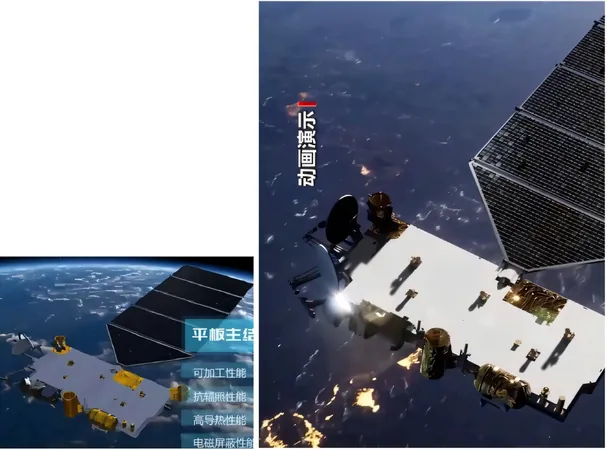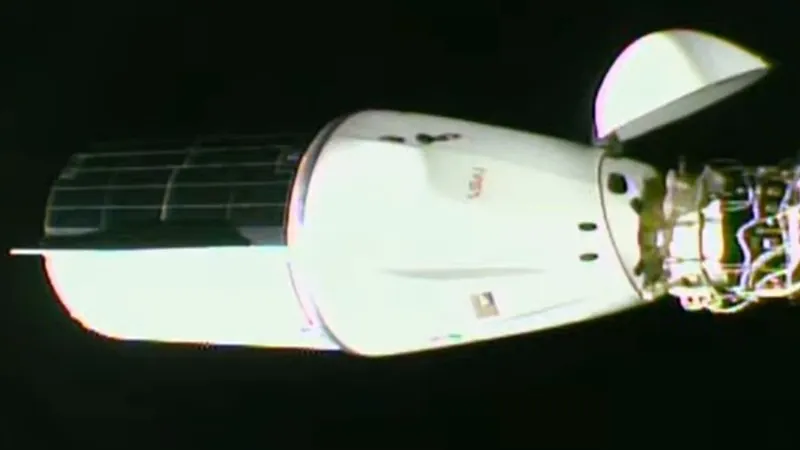
China's "Thousand Sails" Satellites Outshine Expectations: A New Threat to Astronomy?
2024-10-29
Author: Wei Ling
Introduction
In a groundbreaking study conducted by specialists from the IAU Center for the Protection of Dark and Quiet Skies from Satellite Constellation Interference, alongside partners from the Belgian Working Group Satellites, researchers have discovered that the satellites within China's ambitious "Thousand Sails" project are exceeding brightness limits established to safeguard astronomical observations. Their findings, which are detailed in a recent post on the arXiv preprint server, raise new concerns for astronomers worldwide.
The Emergence of Satellite Constellations
For over half a century, humanity has been launching satellites into orbit for a plethora of purposes, including weather forecasting, military use, and telecommunications. As technology has advanced, smaller and more affordable satellites have made it feasible to deploy large constellations that provide ubiquitous communication services, similar to SpaceX's Starlink. However, this proliferation of satellite networks creates significant obstacles for astronomers, obscuring their view of the cosmos.
China's 'Thousand Sails' Initiative
China's latest initiative, the "Thousand Sails," aims to match the functionality of systems like Starlink by deploying thousands of Qianfan satellites that began launching in August 2023. As these satellites enter orbit, researchers have taken advantage of the opportunity to assess the extent of light these satellites reflect back towards Earth. Such reflections not only interfere with the view of celestial bodies but also threaten to hinder important scientific research.
Study Findings
The recent study examined the light intensity from 18 of the Qianfan satellites. Alarmingly, the researchers found that these satellites emit light at magnitudes comparable to many stars visible on a clear night, surpassing the brightness levels recommended by global space agencies and astronomical organizations. With plans for future satellites to be placed at lower altitudes, concerns grow that brightness may increase even further, exacerbating the visibility challenges for ground-based telescopes.
Implications for Astronomy
Despite the obvious implications for astronomical research, the study indicates that no substantial efforts are currently being made by Chinese engineers to reduce light reflection from these satellites. This lack of action raises alarms within the scientific community that if left unchecked, the increasing number of bright satellites in orbit could lead to a "satellite congestion" phenomenon, where the night sky becomes overcrowded and less accessible for observation.
Call for Action
As we stand at the precipice of satellite-laden skies, astronomers and scientists are calling for immediate dialogue and collaboration between space agencies and satellite operators to address these pressing issues. Can we strike a balance between the advancements in satellite technology and the preservation of our precious view into the universe? The answer may determine the future of both astronomical research and our understanding of the cosmos.





 Brasil (PT)
Brasil (PT)
 Canada (EN)
Canada (EN)
 Chile (ES)
Chile (ES)
 España (ES)
España (ES)
 France (FR)
France (FR)
 Hong Kong (EN)
Hong Kong (EN)
 Italia (IT)
Italia (IT)
 日本 (JA)
日本 (JA)
 Magyarország (HU)
Magyarország (HU)
 Norge (NO)
Norge (NO)
 Polska (PL)
Polska (PL)
 Schweiz (DE)
Schweiz (DE)
 Singapore (EN)
Singapore (EN)
 Sverige (SV)
Sverige (SV)
 Suomi (FI)
Suomi (FI)
 Türkiye (TR)
Türkiye (TR)